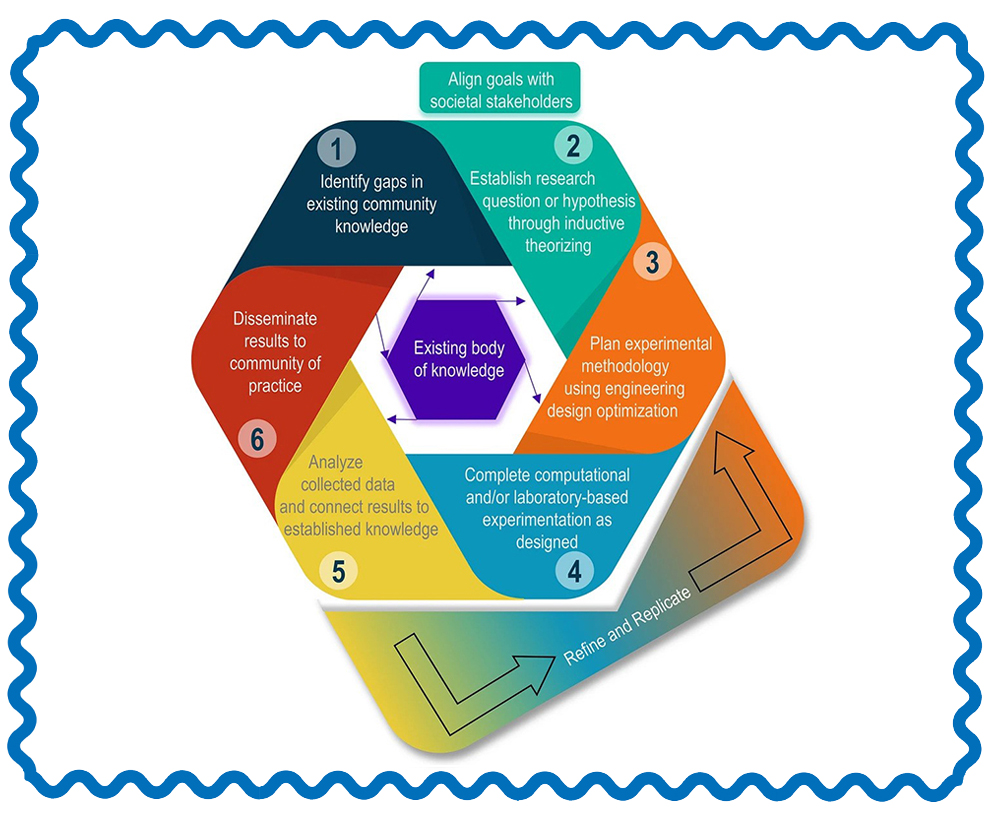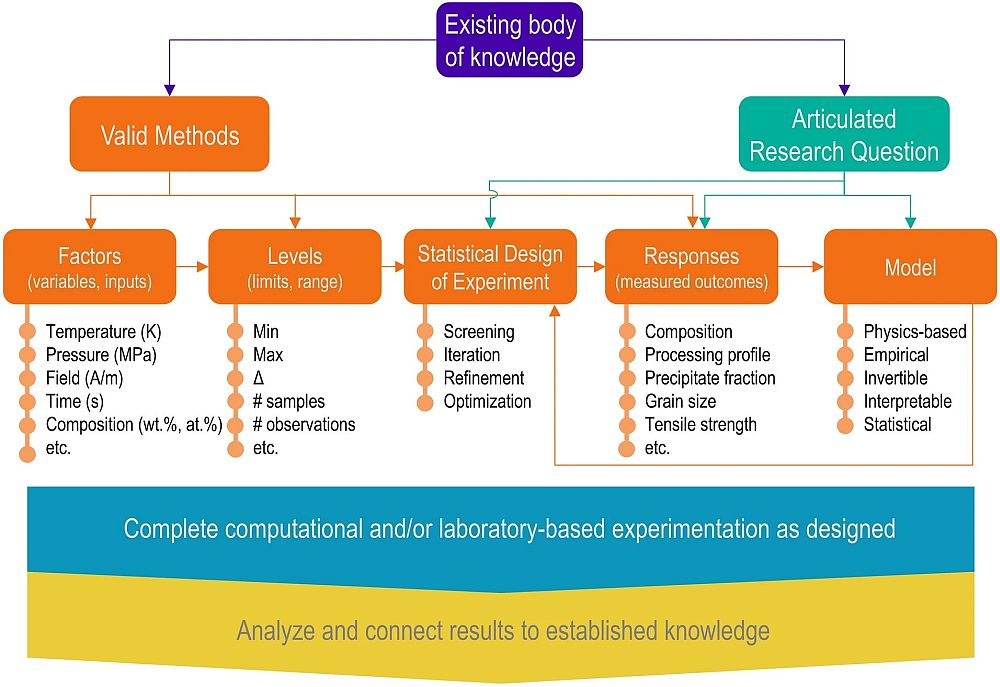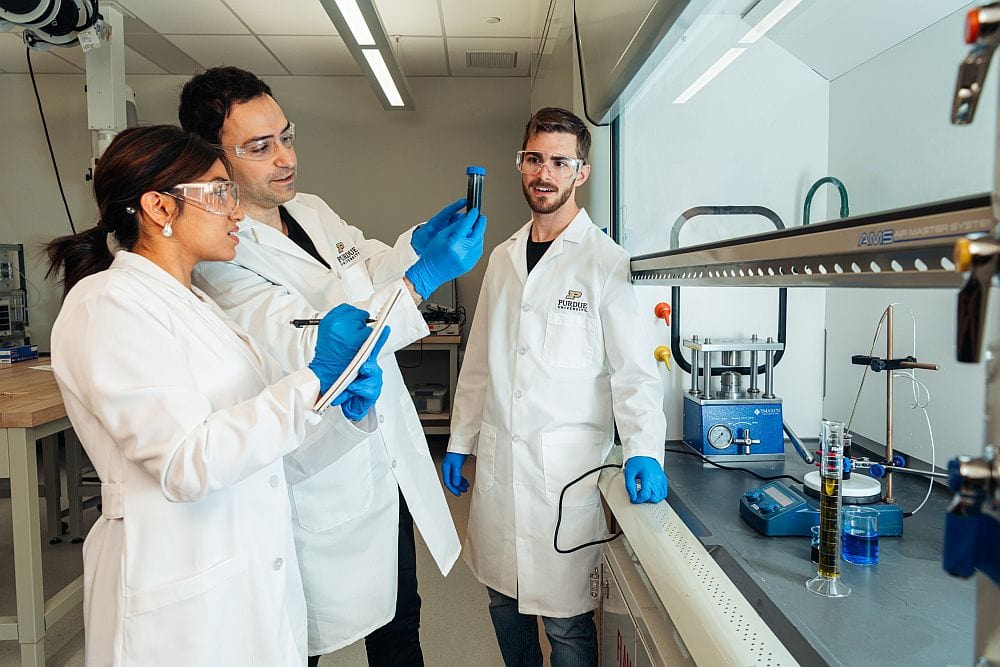
[Image above] Illustration of the Research+ cycle, which outlines the steps that materials science researchers and engineers can use to advance their field’s collective knowledge. Credit: Carter and Kennedy, MRS Bulletin (CC BY 4.0)
As an alumna of Coe College, I am among the small group of undergraduate students around the nation who benefited from high-level, hands-on research experience before stepping foot in a graduate classroom. But in most cases, transitioning to a master’s or doctoral program can be a culture shock to students because they are suddenly expected to set up, perform, and analyze results from research experiments with limited oversight or guidance from their advisors.
This assumption of independence is a big expectation for students who may only understand research within the simple framework of the scientific method. But that method only provides general guidance on how to prepare an experiment. The full research cycle involves the dissemination, discussion, and further refinement and validation of results, which allows it to become part of the collective body of knowledge that guides new research in the future.
Even if students grasp these social aspects of research, another part of the research cycle that is challenging for budding scientists is identifying what results can be considered “significant” or “original” knowledge. Those with a basic science background may require that research provides new insight into the physical mechanisms governing material properties and performance. On the other hand, those with an engineering background may focus on the practical application of scientific principles to design and develop new technologies and products.
Given all these facets of the research cycle, it is no wonder that knowledge development can be a confusing process for early-career researchers. Yet to date, little has been explicitly written about the steps, methodologies, and strategies that STEM researchers use to advance their field’s collective knowledge.
In a new open-access paper published in MRS Bulletin last week, two materials scientists propose a comprehensive model for the research cycle that “can improve the experience of both those early-career and established researchers by providing common expectations, increase the return-on-investment for research sponsors by encouraging robust planning, and increase the impact of our collective research work by encouraging knowledge development.”
The authors are Jennifer Carter, faculty director of the Swagelok Center for Surface Analysis of Materials at Case Western Reserve University, and Marian Kennedy, associate professor of materials science and engineering at Clemson University. In their paper, Carter and Kennedy note that previous researchers have represented the research cycle as a six-step process:
- Identify a gap in knowledge needed by the community through a review of existing knowledge.
- Construct the cycle objective or hypothesis.
- Design and develop a methodology based on validated laboratory or computational experimental methods.
- Apply this methodology to the candidate solution.
- Evaluate testing results.
- Communicate the results to the greater community of practice.
They note that not all experiments can progress through this idealized cycle. For example, “the characterization techniques needed to produce new knowledge may not be currently available, and researchers will first need to invest significant time to develop the needed technique,” they explain.
Even in those cases, though, proceeding with “a carefully edited” hypothesis based on perceived gaps in knowledge and “a specially assigned methodology” that allows for replication and verification will enable a higher “return-on-investment for research stakeholders,” they write.
Based on this understanding of the limitations of the idealized cycle, Carter and Kennedy argue that a materials researcher be defined as “one who engages with any part of the research cycle with the intent of developing new structure–properties–performance–processing knowledge,” regardless of whether they can participate in all aspects of the research cycle.
In a similar vein, they also suggest broadly defining “new knowledge” to include both knowledge related to processing–structure–properties–performance relationships as well as knowledge that enables those discoveries.
Carter and Kennedy then spend several sections describing in detail each step of the research cycle, including showing explicitly how the incorporation of engineering principles within the planning of the experimental methodology can result in an optimized methodology.

Example visualization of the process of a planned research methodology. The planning of the experiment requires that the researcher consider how all these steps are interconnected to optimize the approach to mitigate risk and maximize the probability that the research cycle can successfully answer an articulated research question. Credit: Carter and Kennedy, MRS Bulletin (CC BY 4.0)
Based on these discussions and clarifications, Carter and Kennedy end by presenting a revised research cycle called the Research+ cycle. This cycle, which can be seen illustrated at the top of this CTT, includes three critical steps not often explicitly discussed:
- Understand the existing body of knowledge: Carter and Kennedy state that understanding this knowledge is “foundational to all aspects of being a researcher,” and so they placed it at the center of the methodology.
- Explicitly state how research questions are aligned with societal goals: Carter and Kennedy note that changes in societal focus often lead to tumultuous shifts in research agendas.
- Refine methodologies and replicate results: Carter and Kennedy explain that methodology design is often iteratively refined using tacit knowledge. Thus, “It is helpful for early-career researchers to develop this tacit knowledge by asking questions about the resolution, sensitivity, time, cost, and availability of various methods before adopting them,” they write.
In a LinkedIn post announcing the new model, Carter says this study is “the most important paper I have ever written,” and she hopes to be “remembered as an academic who ‘Engineers the next Engineer-Scientist.’”
In that same post, Kennedy says she is “Thankful for the opportunity to collaborate with Jennifer and many reviewers who strengthened this article.”
The open-access paper, published in MRS Bulletin, is “Conceptualizing the research cycle for the field of materials science and engineering” (DOI: 10.1557/s43577-025-00931-w).
Author
Lisa McDonald
CTT Categories
- Basic Science
- Education


